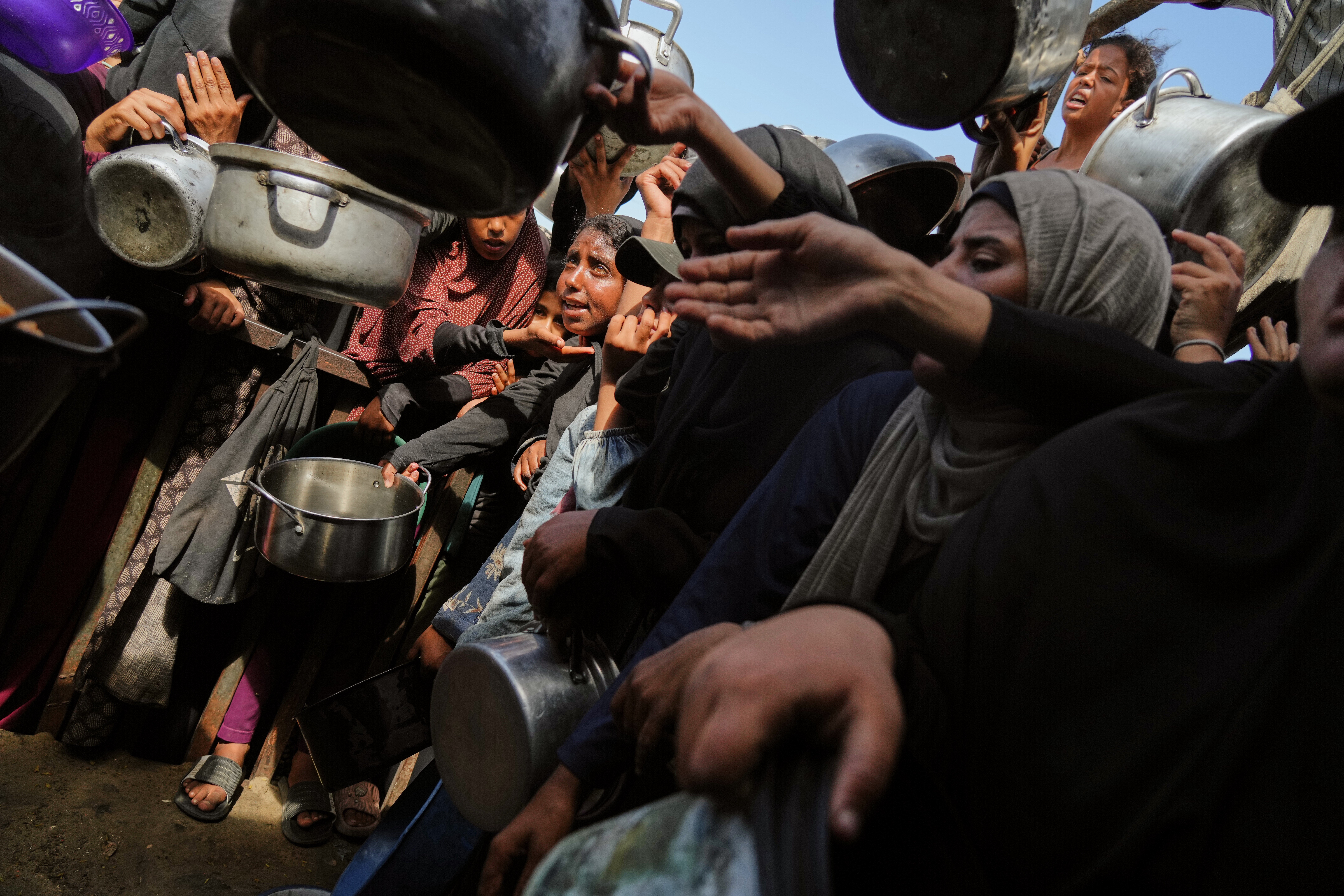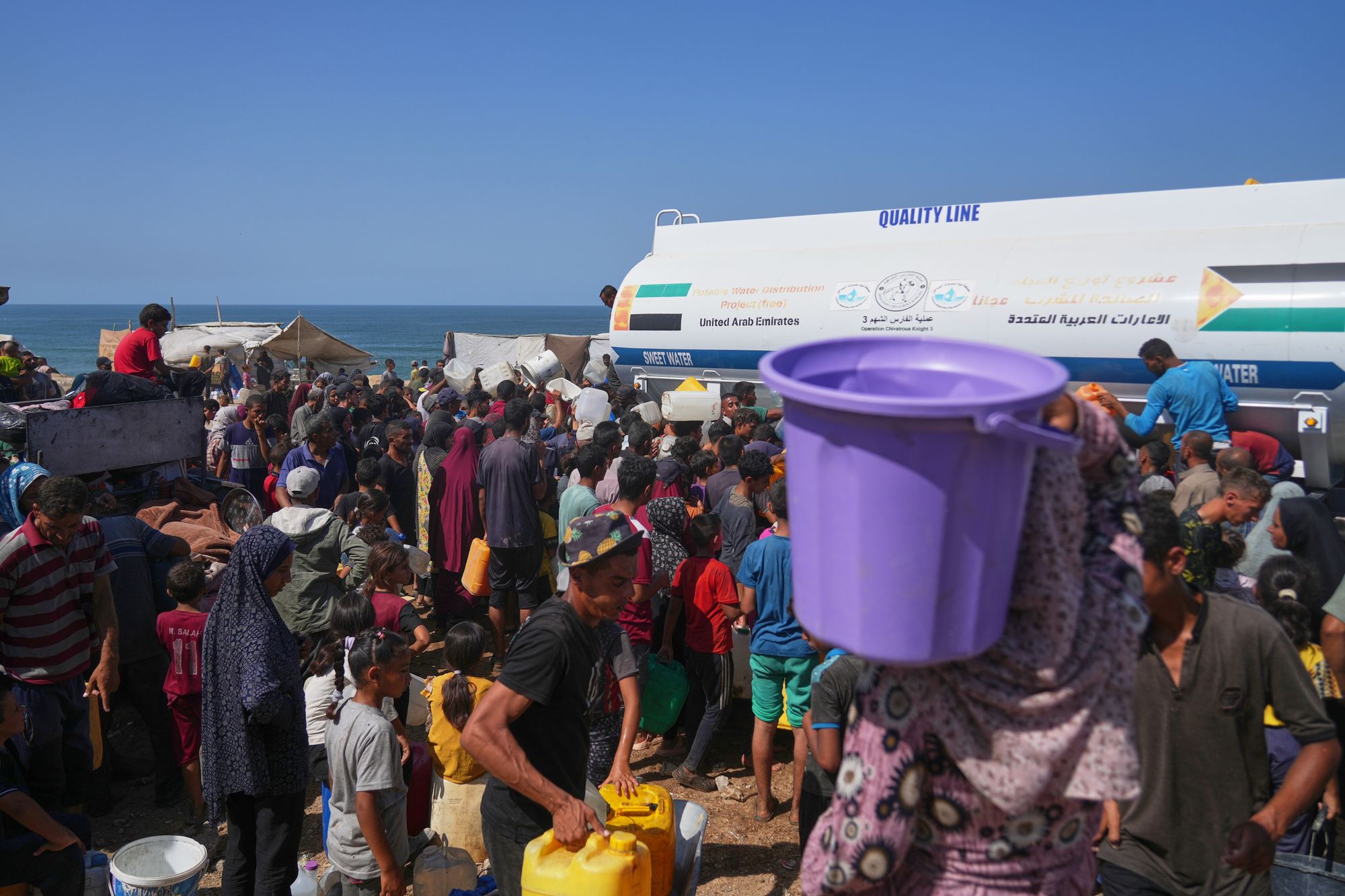Gaza’s water, sanitation, and energy systems are on the brink of a total collapse after nearly two years of war, and as residents begin to return, the region’s environmental damage could make its recovery impossible without urgent action, a new report warned.
Analysts said Gaza’s ecosystems have been devastated by bombardments, almost entirely ruining croplands and water systems, leaving the two million people at continuous risk of a humanitarian crisis.
Thousands of displaced Gazans began returning to what is left of their homes after a ceasefire was announced this week between Israel and Hamas. However, the study released by the Arava Institute on Wednesday estimated that 69 per cent of Gaza’s infrastructure has been damaged. It warned that environmental degradation now threatens public health, food security, and regional stability.
As malnutrition rates surged to 10 times their pre-conflict levels, satellite imagery showed approximately 80 per cent of all croplands in Gaza had been either damaged or destroyed by March 2025, the report said.
“Intensive military activities, such as the movement of heavy machinery, compacts, erodes, and depletes fertile topsoil, making it difficult for vegetation to grow,” the report said.
It added that this devastation of fertile land is of “serious detriment” to the region’s ability to feed itself.

“Gaza’s environment is in freefall – poisoned water, ruined croplands and a shattered power grid are pushing the territory to the brink,” said Dr David Lehrer, the Arava Institute’s director of applied environmental diplomacy.
“What we are witnessing is not just a humanitarian catastrophe but an ecological collapse that threatens the very possibility of recovery.”
The report said local Israeli security measures in Gaza’s coastal waters have rendered fishing activities “virtually impossible since the onset of the conflict”, killing 120 fishermen and forcing many to fish “perilously close to the coast”.
The Independent has reached out to the Israel Defence Force (IDF) for a comment.
The report added that 93 per cent of households now faced water insecurity, with per-person availability dropping to 8.4 litres a day – well below the World Health Organisation’s emergency minimum of 15 litres.
All wastewater treatment plants have stopped functioning, forcing raw sewage into makeshift lagoons that threaten to overflow into streets to people’s houses, and could seep into the shared coastal aquifer, the territory’s main groundwater source.
Almost half of households report sewage or stagnant water within 10m of their shelters, increasing risk cholera and other waterborne disease outbreaks that could spread beyond Gaza’s borders.
Electricity generation capacity has also fallen by over 80 per cent, and power outages last up to 22 hours a day. Fossil fuel generators, particularly diesel, remain the primary source of electricity for humanitarian operations in Gaza, due to Gaza’s collapsed central power grid.

The Arava Institute’s report proposed a phased, community-led strategy for rebuilding Gaza’s essential systems, beginning with localised, off-grid water, energy and food networks.
Its “absorptive” phase focuses on immediate humanitarian needs such as emergency shelter and water access. The “adaptive” phase emphasises decentralised power and wastewater treatment, while the “transformative” phase calls for restoring ecosystems, embedding climate resilience into urban planning, and creating joint regional governance mechanisms for shared resources.
Technologies already piloted in Gaza include solar-powered microgrids, biofiltration wastewater systems, atmospheric water generators and construction materials made from recycled rubble known as GreenCake blocks.

The report’s release comes days after a ceasefire agreement brokered by US president Donald Trump ended two years of war between Israel and Hamas. World leaders meeting in Egypt this week hailed the truce as a first step toward Gaza’s reconstruction, though key details – including how the territory will be governed – remain unresolved.
The World Bank, the United Nations and the European Union estimated earlier this year that the cost of rebuilding Gaza would be about $53bn. Wealthy Arab states are expected to help with that cost, however the roadmap remains unclear, with the biggest challenge lying not only in construction but in restoring basic services and public trust. The Arava Institute’s authors said environmental recovery must also be treated as integral to that process, not as an afterthought.
“Waiting for politics to catch up is not an option,” Dr Lehrer said. “Recovery must start now, with community-driven solutions that can restore the land, water and air.”
The report urges governments, international donors and aid agencies to align funding with locally led approaches, warning that rebuilding damaged infrastructure without addressing contamination and ecosystem collapse would leave Gaza trapped in a cycle of crisis.


